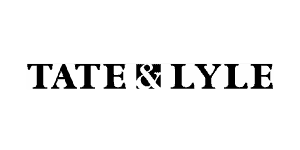Sound pollution has more to it than simply the loud noises we hear. If you wish to understand the true nature of sound pollution, there is one thing you must do; ensure you understand the relationship between sound pressure and frequency. We want to have a closer look at it here so you can expand your knowledge. Then, if you want effective solutions like silencers and attenuators, we can create them for you.
The basics
Sound frequency is the amount of vibrations per second and has a measurement of Hertz (Hz). Sound pressure on the other hand is the force or intensity with which sound waves spread through a medium.
Frequency range
Humans are able to detect sounds in a frequency range between 20 Hz and 20 kHz (20,000Hz). It is regularly termed as “the audible spectrum”. Scientists say the spectrum differs between species; certain animals can listen to lower or higher sound frequencies in nature.
The peak sensitivity of our human ears is between 3,400-4,000 Hz. Sounds within this frequency range tend to be high pitched. Therefore, you generally feel comfortable listening to many noises in the high frequency range. Silencers and attenuators can help here; if you design them to suit the frequencies, you can reduce noise transmission.
Sound pressure level
Sound passes through objects in the form of waves. These apply some pressure on the object as they move further. Sound pressure levels get measured in Pascal (Pa). It indicates the change from ambient pressure. However, generally we convert to decibels to make it easier to express how we perceive it. It also quantifies the intensity. The sound pressure relies on several factors such as particle velocity. It is a velocity that’s dependent directly on the sound frequency.
The level of the sound pressure is highest closest to the source. As sound travels further, the pressure decreases. The range of human hearing goes from 0 dB to 120-140 dB. This is the pain threshold. Research states long exposure to sounds over 85 dB can lead to hearing damage. A silencer or attenuator may be necessary to absorb sound waves and reduce the pressure/intensity.
The impact of sound pollution
Apart from being annoying, sound pollution increases health risks as well. So, you should keep everyone safe from each type of noise. The pollution affects communities and you can see the issues take hold of urban populations. Residential locales close to shipyards, highways, and airports generally also experience a higher degree of sound pollution. This will have a negative impact on quality of life, sleep, and overall well-being.
Do you want bespoke attenuators and silencers?
At Ventx, we design equipment that can benefit all kinds of clients. It will keep workers safe and enable companies to comply with UK standards for health and safety and environmental protection. In addition, it reduces noise pollution to benefit people who live nearby and local wildlife.
Our people can help clients in various industries, including some of the noisiest workplaces you can image. Crucially, we can deliver solutions for plants at the design stage or clients with existing sites. The latter is more challenging, but we’ll do all we can to deliver exceptional results.
So, if you’d like to work with us to obtain attenuators and silencers, please get in touch. We offer a comprehensive service, including surveys, acoustic analysis, product design, and installation.









